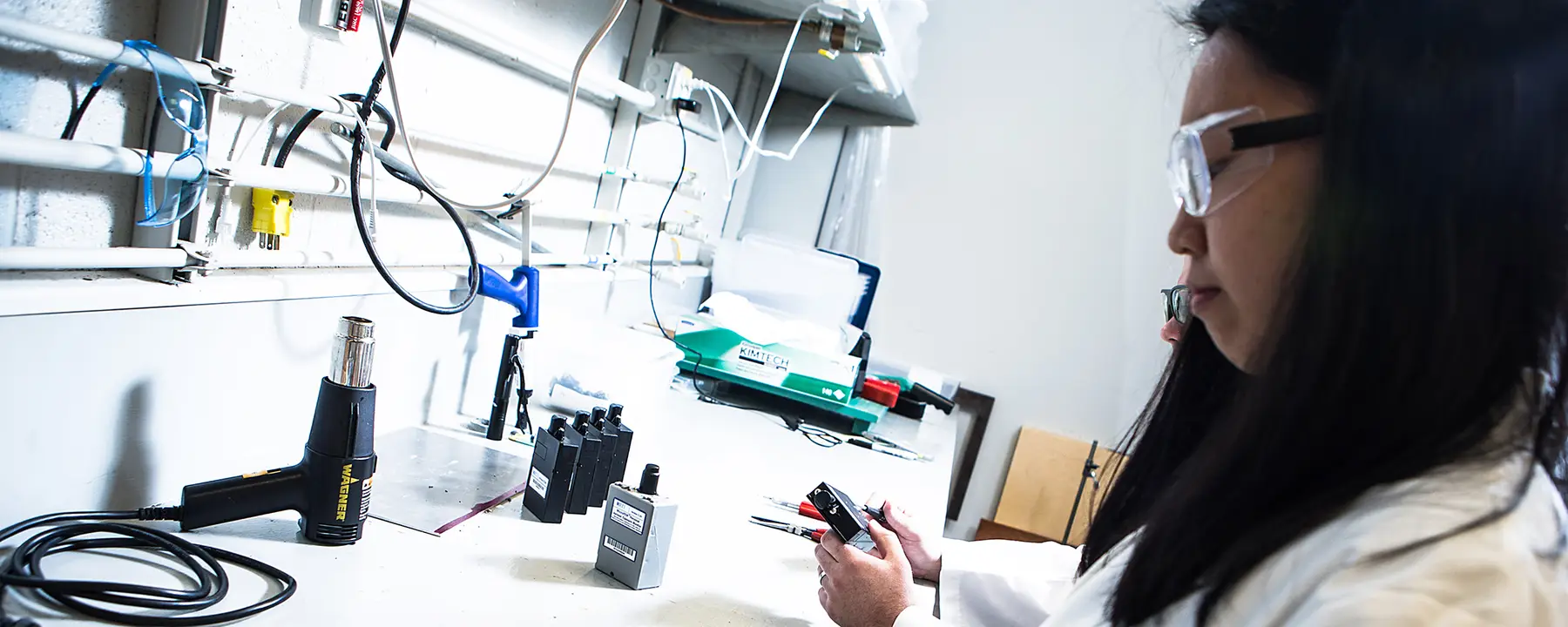A new generation of personal exposure monitors designed for the youngest and most vulnerable
In the households of much of the developing world, the everyday practice of cooking on a wood-fuel stove can expose family members to air pollution. The stoves release harmful levels of particulate matter, potentially causing asthma, pneumonia, and other respiratory diseases. Mothers and very young children who spend most of their days at home, suffer the most exposure to this harmful smoke.
It has long been suspected that people who are frequently exposed to cookstove smoke may be more likely to develop respiratory ailments and numerous other health problems. However, exposures can be difficult to measure at the individual level, and the acceptable household air pollution exposure thresholds remain unknown.
RTI made strides in this area of research by inventing the Micro-Personal Exposure Monitor (MicroPEM™)―a small, lightweight sensor researchers use to measure a person’s daily exposure to particulate matter (PM) in the air. MicroPEM devices have provided precise data for many health effects studies.
The MicroPEM is compact and convenient for adult study participants, but can be cumbersome for small children—the people who suffer the most from exposure to household air pollution. In 2012, looking for a way to study this vulnerable population, the Bill & Melinda Gates Foundation asked us to develop a smaller and lighter version of the MicroPEM for children under 5 years of age.
Designing and Testing a Smaller, More Comfortable Device
The Enhanced Children’s MicroPEM (ECM) provides PM sensing capabilities similar to the MicroPEM in a package half the size. About the size of a pack of cards, and 90 grams lighter than its predecessor, the ECM is suited to our smallest study participants.
Like the MicroPEM, the ECM can aerodynamically separate and detect very fine airborne particles at two sizes: under 10 micrometers, known as PM10, and under 2.5 micrometers, or PM2.5. The ECM also measures temperature, humidity, and movement. It can function for 48 hours before needing a recharge and all data is stored on a MicroSD card, eliminating the need to clear sample data between deployments.
Getting the ECM down to its current size took two years of trial and error, and demanded our expertise in engineering, microelectronics, and field studies. By 2015, we had a model that was ready for field testing that could achieve the necessary performance in less volume and with less material. We tested it with families of children under 5, who provided suggestions for improving safety and comfort.
The result was a streamlined and updated version of the MicroPEM that measure particles, temperature, and movement, just like the original. To allow for improved measurement capability in the future, we also made the ECM an expandable platform to which a variety of additional sensors can be added.
A Valuable Tool for Groundbreaking Studies in Public Health
We recently produced 400 ECMs for the Bill & Melinda Gates Foundation to support, among other possible studies, a major, widely anticipated five-year clinical trial. One goal of this trial is defining the relationship between exposure to particulate matter and adverse health outcomes among women and children in developing countries. Researchers hope this study will open a new avenue of research on children’s health.
Using the MicroPEM, we and others have conducted research in the United States and in more than 25 countries in Europe, Africa, Asia, and South America on the impact of particulate matter exposure on asthma, pneumonia, cognitive development, and other aspects of health. The ECM enables us to more easily quantify these effects, specifically among the youngest children. The results will be of tremendous value as developing countries consider policies that promote cleaner-burning fuels and safer methods of cooking.
- Bill & Melinda Gates Foundation



